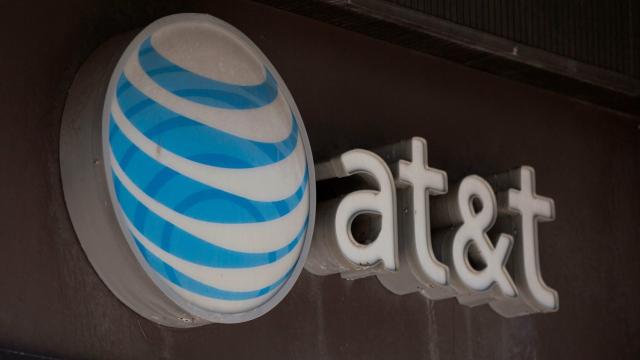As of Oct. 1, AT&T has stopped offering DSL as a new service, according to USA Today. Existing DSL subscribers, who connect to the internet via copper phone lines, will be grandfathered in. DSL is definitely old technology, but many people, especially in rural areas, still rely on it for internet access. Internet service providers have mostly focused on expanding cable broadband and fibre networks in wealthy metropolitan and suburban areas. Basically, if you don’t already have DSL service and you need to connect to the internet, you may be completely out of options.
AT&T has seen the number of DSL subscribers slowly decrease over the years. The telecom reported 653,000 total DSL connections at the end of the second quarter of 2020, compared to nearly 14.5 million fibre customers, USA Today noted. That low DSL subscriber number is not surprising considering how broadband has grown and expanded since the ‘90s, but cutting off service without providing another option leaves many customers in digital darkness.
According to a joint report from the Communications Workers of America (CWA) and the National Digital Inclusion Alliance (NDLA), AT&T has been installing just the fibre foundation in some unserved and underserved areas, but not actually installing the rest of the equipment needed to connect it to other homes outside of a specific area. About 18 million U.S. households do not have broadband of any kind, including mobile or satellite, and 14 million of those households are in urban areas — the remaining 4 million are in rural areas. Of the 53 million households in AT&T’s home internet service areas, only about 15 million of them have access to fibre.
The report notes that households with fibre internet tend to be wealthier, with a median income about 34% higher than households with DSL. Only 5% of rural households have access to AT&T broadband, and AT&T does not provide the FCC-defined broadband minimum speeds (25 Mbps download, 3 Mbps upload) to 28% of its customer base.
AT&T CEO John Stankey wrote in a recent blog post that “private dollars alone won’t solve [the] challenge” of providing broadband internet to those 18 million U.S. households that lack home broadband access. The government needs to step up and create “sustainable funding mechanisms for the long run” to continue sustaining “private investment in deployment and upgrades,” Stankey continued.
In other words, the government needs to give telecoms more money so they can build a better internet infrastructure in unserved and underserved urban and rural locations. In a statement provided to Ars Technica, an AT&T spokesperson said its “investment decisions are based on the capacity needs of [its] network and demand for [its] services.” It appears that demand from those 653,000 current DSL subscribers isn’t motivation enough for AT&T to expand its cable broadband and fibre networks without a government hand-out.
AT&T says it does not “redline” Internet access, the practice of prioritising fibre broadband access for wealthy households. Yet Jacob North, an Oklahoma City resident who lives in low-income housing, told Ars Technica that AT&T fibre has not been extended to his location, but is available in the surrounding, higher-income neighbourhoods. Additionally, one of North’s neighbours was not able to get AT&T DSL before the Oct. 1 cut-off date because AT&T had no available service slots for that person. That leaves North’s neighbour with only one choice of ISP in their area: Cox.
[referenced id=”1511247″ url=”https://gizmodo.com.au/2020/09/system-reboot-gizmodos-new-podcast-to-fix-a-broken-world/” thumb=”https://gizmodo.com.au/wp-content/uploads/2020/09/25/bcjzhhu6ehegdzlkhrpg-300×169.png” title=”System Reboot: Gizmodo’s New Podcast to Fix a Broken World” excerpt=”Gizmodo has a podcast! Again!”]
It’s unclear what will happen to AT&T’s remaining DSL customers. It’s possible that AT&T wants to abandon its DSL service altogether, but what will that mean for the future maintenance of DSL lines? Last year, AT&T cut 1,800 jobs that affected wireline technicians who maintain the physical lines that carry DSL, cable, and fibre broadband to customers. The job cuts came soon after AT&T had filled its FCC obligation to roll out fibre to 12.5 million customers by 2019 as part of its 2015 merger with DirecTV.
The FCC is set to hold a $US16 ($22) billion rural broadband auction Oct. 29, distributing an additional $US4 ($6) billion at a later date. Telecoms like AT&T can place bids to win a piece of that money to deploy more broadband to urban and rural areas that need it. Earlier this year, when the FCC announced its auction, AT&T and other ISPs were mostly on board with it, but balked at the funding set aside for speeds higher than the base 25 Mbps download, 3 Mbps upload. In a letter to the FCC, AT&T suggested it should give more rural funding to ISPs that offer slower speeds to those areas.
When you look at those previous statements and compare them to the blog post AT&T’s CEO recently wrote, the ideologies seem to be in direct conflict with one another: For some reason, Congress needs to continue giving private ISPs money for deployment and upgrades, but it should also focus on giving rural broadband dollars to companies who offer 50 Mbps speeds and slower to rural areas. What that seems to boil down to is it’s more advantageous to provide faster internet connections in more affluent areas because those households will more likely be able to afford it. The rural broadband dollars the FCC plans to hand out to ISPs will only go as far as ISPs are willing to take them. If they don’t plan to use that money to build out and replace DSL connections to offer service that people can actually afford, then it seems like rural customers will be shit out of luck. Still.
